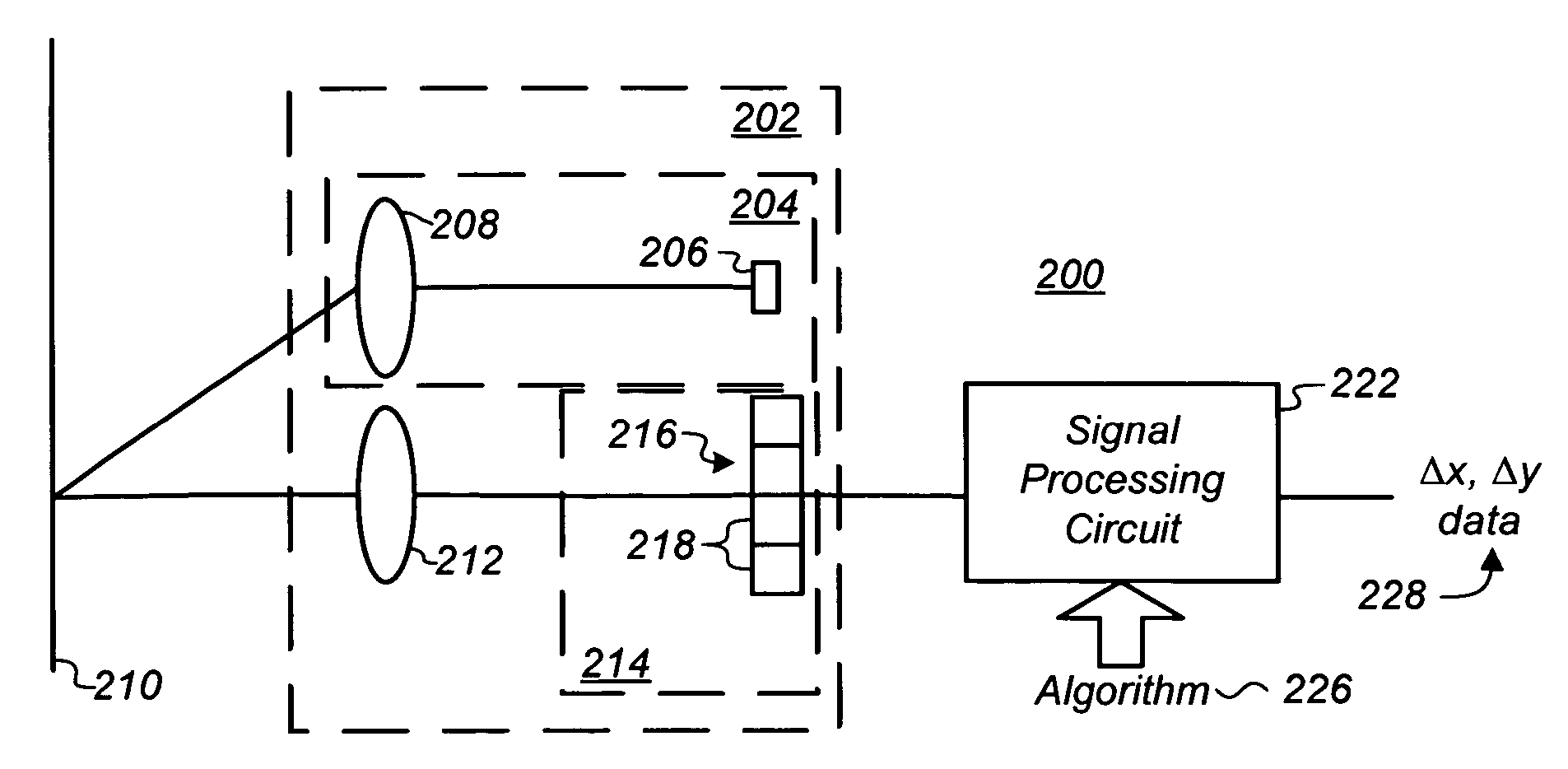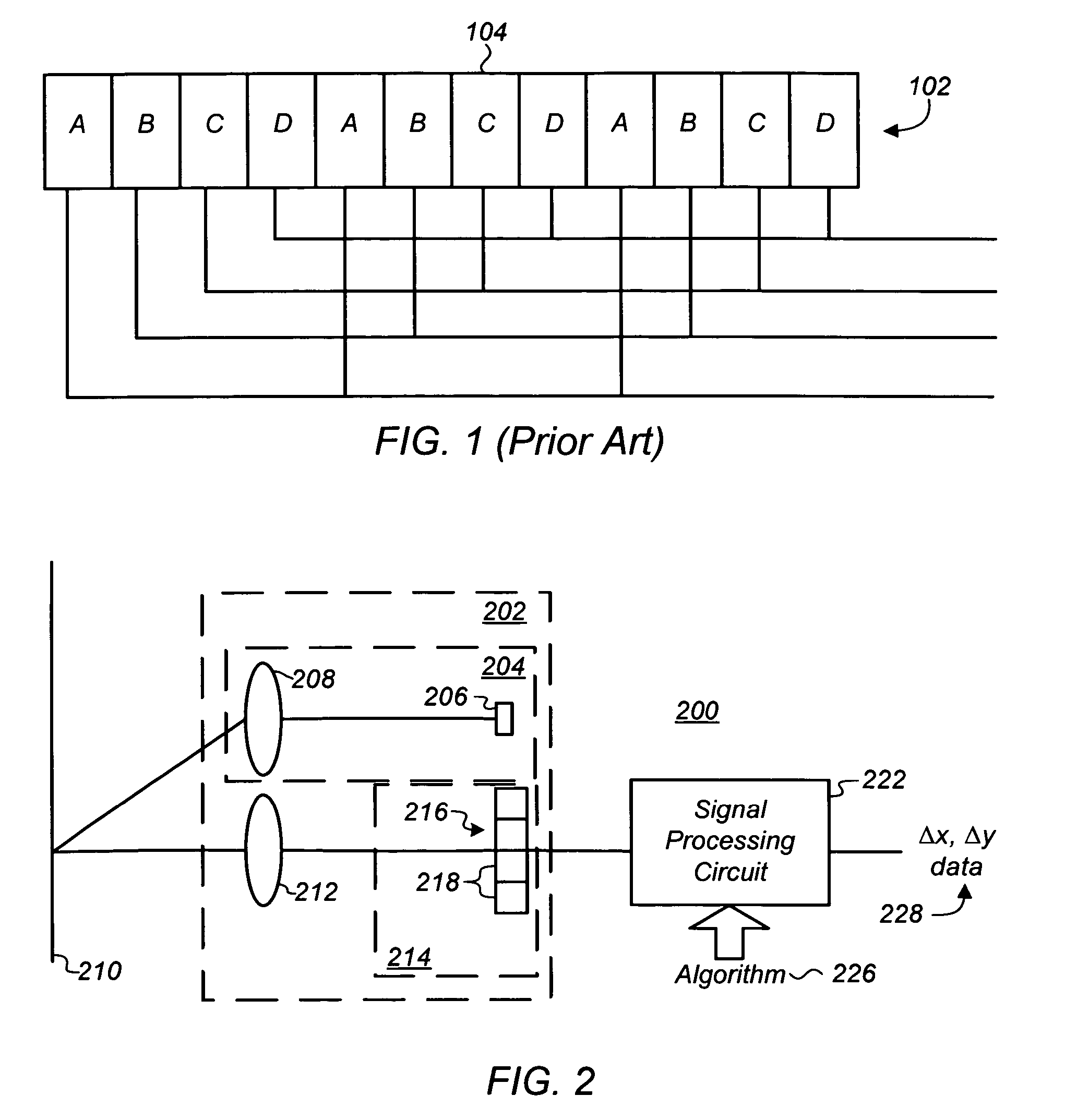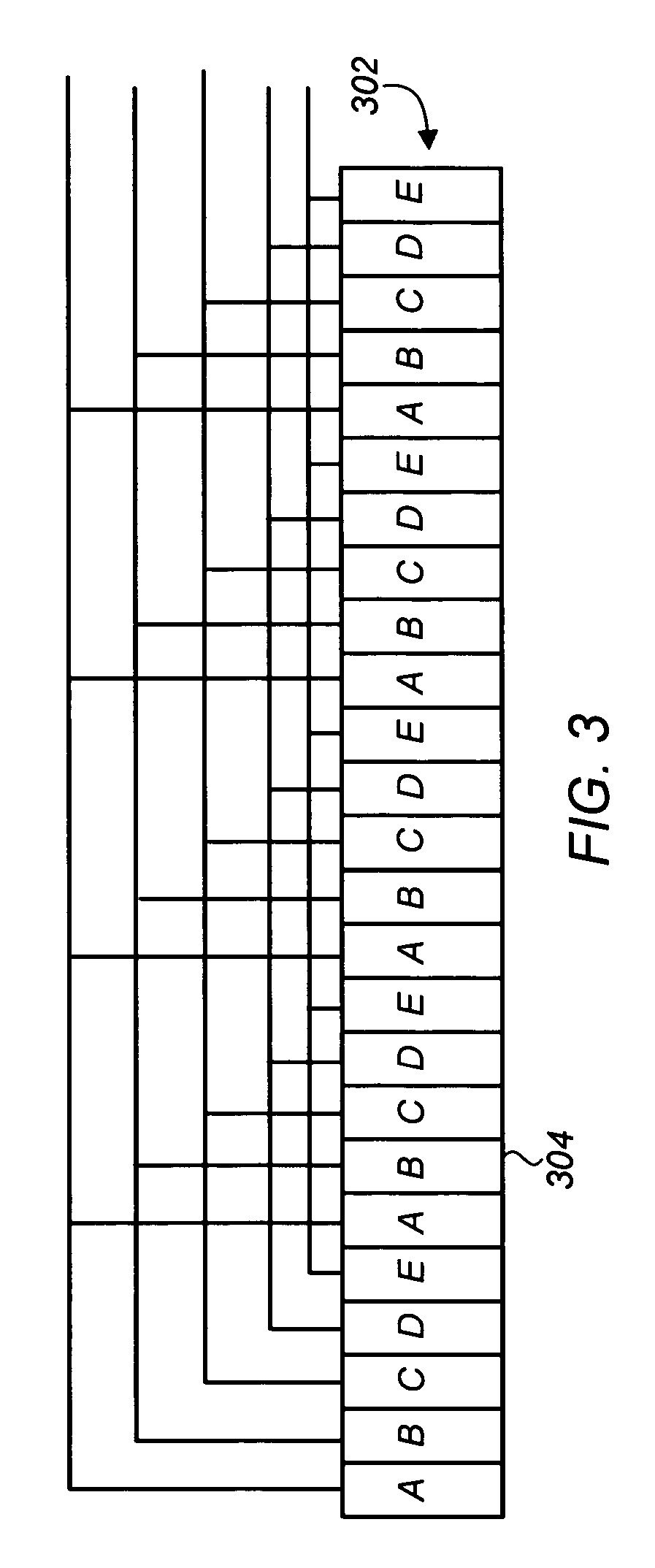Signal processing method for use with an optical navigation system
a technology of optical navigation and signal processing, applied in the field of signal processing, can solve the problems of limiting the usefulness of the technique in power sensitive applications, unsatisfactory power consumption, and affecting the use of speckle-based devices,
- Summary
- Abstract
- Description
- Claims
- Application Information
AI Technical Summary
Benefits of technology
Problems solved by technology
Method used
Image
Examples
Embodiment Construction
[0020]The present invention is directed to signal processors or signal processing circuits and methods, and more particularly for use in optical navigation systems with comb detector arrays to determine motion of the system relative to a surface without the use of sinusoidal signals.
[0021]Optical navigation systems can include, for example, an optical computer mouse, trackballs and the like, and are well known for inputting data into and interfacing with personal computers and workstations. For purposes of clarity, many of the details of optical navigation systems in general and optical sensors for optical navigation systems in particular that are widely known and are not relevant to the present invention have been omitted from the following description. Optical navigation systems and optical sensors are described, for example, in co-pending, commonly assigned U.S. patent application Ser. No. 11 / 129,967, entitled, “Optical Positioning Device Having Shaped Illumination,” filed on May...
PUM
 Login to View More
Login to View More Abstract
Description
Claims
Application Information
 Login to View More
Login to View More - R&D
- Intellectual Property
- Life Sciences
- Materials
- Tech Scout
- Unparalleled Data Quality
- Higher Quality Content
- 60% Fewer Hallucinations
Browse by: Latest US Patents, China's latest patents, Technical Efficacy Thesaurus, Application Domain, Technology Topic, Popular Technical Reports.
© 2025 PatSnap. All rights reserved.Legal|Privacy policy|Modern Slavery Act Transparency Statement|Sitemap|About US| Contact US: help@patsnap.com



